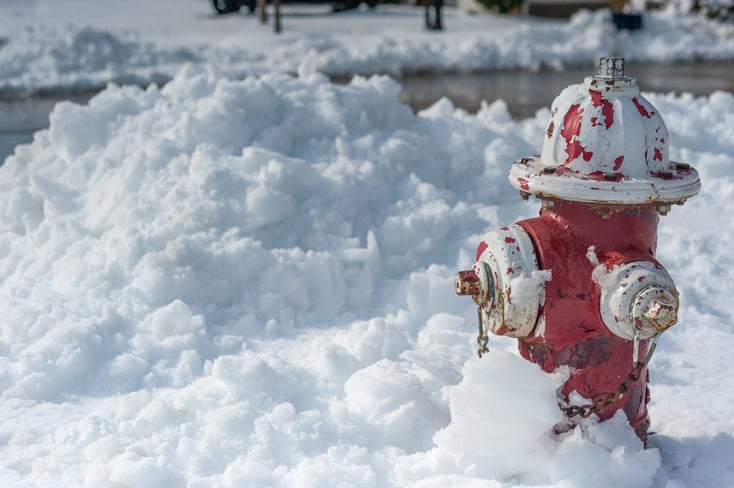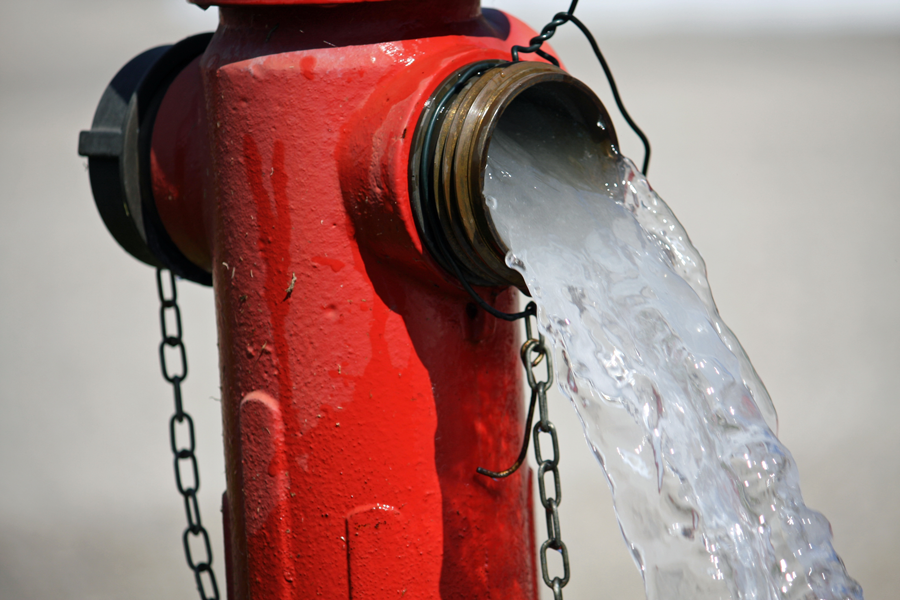Cold Winter approaches - What to do with your hydrants after use?
- Home
- Team EJP Blog
- Cold Winter approaches - What to do with your hydrants after use?
- Sep 25, 2015 11:44:31 AM
- Everett J. Prescott

With winter right around the corner, the practices used during the warmer times of the year need to be put to rest. Specifically, leaving your hydrant's barrel full after using it. For many fluids, including water, when that liquid freezes, it needs to pass from a fluid state to a strong crystallized formation as a solid. As this process takes place, the liquid expands, putting extreme pressures on the sides of the container it's in, often cracking or shattering them. How do you take care of your hydrants during the winter to ensure they'll continue working when you need them? Let's take a good look at the concepts behind ice formation and how to protect your investment.
Hydrant Types: Web Barrel Versus Dry Barrel
The first thing to consider is what type of hydrant you have. A wet barrel hydrant always has water flowing to it, with water flowing out after the valve has been connected. If you picture your average wet barrel fire hydrant, you'd remove the plugs to attach the hose, then work the valve on the top with a wrench to turn on the water flow to the hose. If you're looking at a dry barrel fire hydrant, by comparison, you'll see a pair of valves that work in sync with each other. The main water valve is opened after the hose is attached, and as it is opened, it closes the drain valve. Once the main water valve is closed, the drain valve is opened, allowing the water in the barrel to drain out of the system, protecting it from freezing and breaking.
Dry Barrel: Not Always Protected
 If you're thinking that having a dry barrel hydrant means you're always protected, that's not necessarily true either. If either valve fails, it won't drain the barrel because a failed drain valve leaves water in the hydrant barrel while a failed main valve will continue supplying water to it even if it's draining through a functioning drain valve. That means if you get a hard freeze, the water is still in the barrel and the barrel will be damaged and may crack. Another instance of where this type of hydrant can fail is when there is unseasonably cold temperatures during the winter for your area. The cold temperatures can make your frost line go deeper than usual, causing the water main to freeze up and damage the valves themselves.
If you're thinking that having a dry barrel hydrant means you're always protected, that's not necessarily true either. If either valve fails, it won't drain the barrel because a failed drain valve leaves water in the hydrant barrel while a failed main valve will continue supplying water to it even if it's draining through a functioning drain valve. That means if you get a hard freeze, the water is still in the barrel and the barrel will be damaged and may crack. Another instance of where this type of hydrant can fail is when there is unseasonably cold temperatures during the winter for your area. The cold temperatures can make your frost line go deeper than usual, causing the water main to freeze up and damage the valves themselves.
Testing Your Dry Barrel Hydrant Valves
So how do you go about testing your dry barrel hydrant's main and drain valves? Essentially, it requires taking a string with a weight on the end that you can lower into the bottom of your hydrant. If the string comes back up completely dry, you know that your barrel isn't continuing to refill, is draining fully and that you won't have to worry about the barrel being left with water in it to freeze and cause damage. If it comes back up wet, you'll need to make some repairs to your system. If it won't reach the bottom, it's struck ice because the hydrant is frozen. This is why it's so important to check your hydrant when it can't possibly be frozen, because it helps you determine the proper length of the string.
With old man winter knocking at the door, it's time to take a few minutes and take stock of your hydrant to make sure the barrel will drain properly and stay drained over the winter. If you discover that your hydrant needs repairs, have additional questions about winterizing your hydrant or need further details, please feel free to contact the professionals at Team EJP. We're always happy to help.









